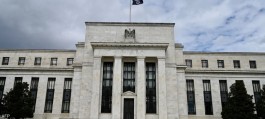Gold prices rose to a new record high above $2,350 an ounce, as investors shifted their focus to U.S. inflation data due later this week, while geopolitical risks also boosted its appeal.
Bullion prices rose 1%, reversing earlier losses, as traders weighed policymakers’ stance on when they will shift to lower borrowing costs, ahead of March inflation data on Wednesday. The Federal Reserve is expected to cut interest rates this year, but it needs to see more evidence of falling inflation before making any move. Higher interest rates are typically negative for non-interest-bearing gold.
The precious metal remains above $2,300, having hit a series of new record highs in recent weeks. However, the move has left some observers scratching their heads amid the lack of clear catalysts for such a sudden surge that began in mid-February, especially as traders abandoned their bets on sharp interest rate cuts during that period.
Demand for gold
Gold has risen more than 18% since then on optimism that the Federal Reserve is close to cutting interest rates. Demand from central banks has also played a role, with the People’s Bank of China adding to its gold reserves for a 17th straight month in March.
Elsewhere in the world, gold benefited from increased demand for safe havens amid ongoing tensions in the Middle East, with Israel announcing on Sunday it was withdrawing some of its troops from southern Gaza, Iran preparing to retaliate for an alleged Israeli attack on its consulate in Syria, and Hezbollah warning it was ready for war.
Spot gold rose 0.2% to $2,335.38 an ounce as of 1:41 p.m. in Singapore, after touching a high of $2,353.95. The Bloomberg Dollar Spot Index was little changed. Silver prices also rose, while platinum and palladium prices were mixed.



































